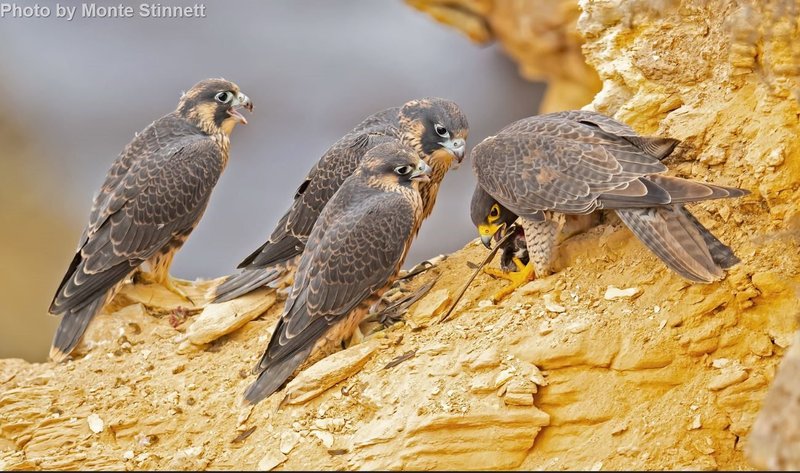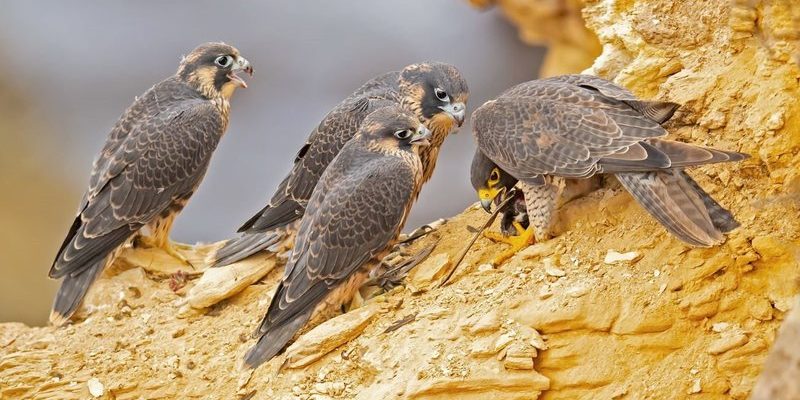
The Peregrine Falcon, or *Falco peregrinus*, is a symbol of both power and resilience. From ancient civilizations that revered them to modern conservation efforts that have brought them back from the brink of extinction, their history is rich and layered. Let me guide you through the evolution and journey of this incredible bird—its adaptations, habitat changes, and the ongoing battle for survival.
The Origins of the Peregrine Falcon
To understand the evolution of the Peregrine Falcon, we should start with its origins. Scientists believe that these birds originated in the Northern Hemisphere around a million years ago. The fossil records show that they’ve adapted impressively to a variety of environments—forests, mountains, and even urban landscapes. This flexibility has played a massive role in their survival.
Peregrine Falcons have a close relative, the Prairie Falcon, but what sets them apart is their extraordinary speed. With their streamlined bodies and strong wings, these birds can dive at breathtaking speeds to catch prey. It’s almost like nature crafted them with a sports car design in mind!
You might be wondering how adaptability helped them thrive in various habitats. Their diverse diet plays a crucial role. While they primarily hunt birds, they’ll also go after small mammals and even insects. This ability to switch up their menu means they can survive in different places, from deserts to city skylines.
The Role of Peregrine Falcons in Ancient Cultures
Throughout history, the Peregrine Falcon has captured the human imagination. In ancient times, they were highly prized by nobility for falconry—a sport where trained birds are used to catch game. Kings and queens would use these birds in hunting, showcasing their power and refinement. Imagine walking alongside a royal, your eyes drawn to the majestic falcon perched on their arm, ready to swoop down and catch its prey.
In various cultures, these falcons also held symbolic meanings. For instance, in Native American traditions, the Peregrine Falcon is often seen as a messenger—a creature connecting the earthly and spiritual realms. Its speed and grace made it a symbol of freedom and agility.
But the bond between humans and Peregrine Falcons hasn’t always been a positive one. Their popularity in falconry led to hunting pressures, which contributed to declines in their populations. It’s essential to recognize this historical context when discussing conservation efforts today.
The Decline: A Threatened Species
Fast forward to the mid-20th century, and the Peregrine Falcon faced a significant threat. The rise of pesticides, particularly DDT, severely impacted their populations. The chemical caused eggshell thinning, leading to lower hatching success rates. It was heartbreaking to see a bird so magnificent struggle for survival due to human actions.
By the 1970s, the Peregrine Falcon had disappeared from the eastern United States, and the situation appeared dire. Can you imagine a world without this incredible bird? Thankfully, conservationists rallied together to address the crisis, bringing attention to the need for protection and recovery efforts.
As populations dwindled, habitat preservation became crucial. Conservation organizations worked tirelessly to create safe spaces for nesting and hunting. They even implemented breeding programs to help repopulate areas where the falcon had vanished. These efforts showed that positive change was possible, and people around the world began to take action.
Conservation Success Stories
The story of the Peregrine Falcon is ultimately one of hope and resilience. Thanks to concerted conservation initiatives, the falcon has made a remarkable comeback. In the 1980s, the species was reintroduced to several areas, and by 1999, it was removed from the endangered species list.
This resurgence is a testament to the hard work of wildlife biologists and activists who dedicated themselves to restoring the falcon’s populations. They not only focused on breeding programs but also worked on educating the public about preserving natural habitats.
One notable success is the reestablishment of Peregrine populations in cities. Urban environments, once thought to be inhospitable, have become perfect hunting grounds. The tall buildings in cities like New York and Chicago mimic cliffs, providing ideal nesting sites. People now often spot these elegant birds swooping past skyscrapers, reminding us that nature can reclaim its space even in bustling metropolises.
The Unique Adaptations of the Peregrine Falcon
What makes the Peregrine Falcon such an incredible predator? Its adaptations are nothing short of extraordinary. One key aspect is their vision. These birds can spot prey from over a mile away, thanks to their sharp eyesight that’s five times better than ours. Imagine walking in your neighborhood and being able to see a tiny mouse scurrying around from a block away!
Their physical structure also enhances their hunting skills. Strong, pointed wings allow them to dive at high speeds, while their specialized nostrils help regulate airflow during those intense descents. Honestly, it’s like they were designed for the ultimate game of aerial tag.
Additionally, the Peregrine’s beak is uniquely shaped for delivering a quick, precise kill, making them efficient hunters. When you think about it, every feather and muscle serves a purpose, creating a perfect machine for survival in the wild.
The Peregrine Falcon Today: A Symbol of Hope
Today, the Peregrine Falcon stands as a powerful symbol of conservation success. Their story reminds us of the impact our choices can have on the environment. As a species that once faced near extinction, they now thrive across continents, adapting to new challenges.
But their story isn’t just about resilience; it’s also a call to action. Protecting Peregrine Falcons and their habitats means ensuring a healthier ecosystem for all. So next time you see a falcon soar through the sky, think about the incredible journey it has had and the battles it has won.
Conservation is an ongoing effort, and the Peregrine Falcon teaches us the importance of being stewards of our planet. Their recovery is a beautiful reminder of what we can achieve when we come together to protect our natural world.
In conclusion, the *Peregrine Falcon* has an incredible story woven into the fabric of nature and human history. From ancient cultures to modern conservation efforts, these birds have captivated hearts and minds. Their evolution, adaptations, and remarkable recovery showcase the resilience of nature.
As we continue to learn from the Peregrine Falcon, let’s take action to protect and celebrate the beauty of our natural world. These birds aren’t just symbols of speed—they’re reminders of the importance of balance between humanity and wildlife. So, keep looking up! You never know when you might catch a glimpse of one of these magnificent creatures soaring high above, reminding us of the sky’s endless possibilities.

